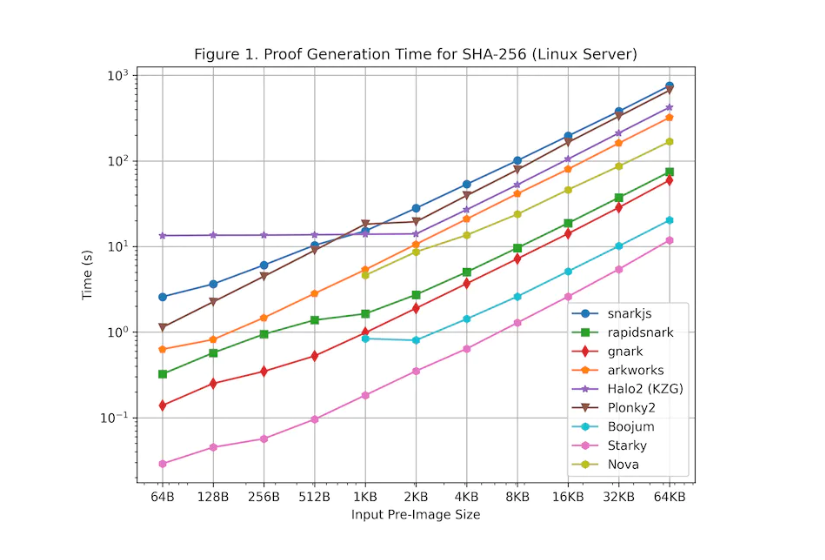zkSync is one of the most prominent Layer 2 performers in the Crypto market. zkSync started to get excited when it launched the EVM compatible version of zk technology, zkSync Era. Then continued to launch the ZK Stack toolkit to build Hyperchain and Hyperchains linked by Hyperbridge.
Recently, zkSync continued to release an upgrade called Boojum to help improve scalability. So what is Boojum? Let’s find out in this article!
To understand more about Boojum, you can read the following articles:
- ZK Credo, ZK Stack, Hyperchains & Hyperbridges: ZkSync’s Ultimate Weapon for Layer 3 Wars
- What is ZkSync? ZkSync Cryptocurrency Overview
- What is the Starknet Stack? Tools to help Starknet compete fairly with other Layer 2s
- What is Zk Rollup? Zk Rollup Solution Overview
zkSync Remaining Issues
SNARK proof-of-concept has demonstrated performance on the zkSync Lite and zkSync Era networks, processing very large numbers of transactions in near real-time. But to meet the operational and communication needs of Hyperchain as well as advance to the Mass Adoption market, it is necessary to improve speed and decentralization.
Hyperchain communicates with each other through Hyperbridge and Tokens will be transferred according to the Omnichain-style Mint – Burn mechanism. To meet this need, transactions need to be authenticated almost instantaneously, but zkSync’s original SNARK technology is not really optimal.
The issue of decentralization of Layer 2 is also a problem, when most Layer 2s use their own Sequencers to build or need to go through KYC. Because the Sequencer is the most important component in the Layer 2 network, it requires very high hardware. zkSync’s proof system currently runs on an A100 GPU cluster, each with 80 GB of RAM.
To solve those problems, zkSync Era has moved to a new STARK-based proof system called Boojum. On zkSync, two types of evidence, STARK and SNARK, will be used simultaneously to increase TPS and reduce hardware requirements for operators, especially Sequencer.
What is Boojum?
Boojum is an upgrade that will convert zkSync Era to a proof-of-concept system powered by STARK, delivering high performance. Boojum is the name of the Rust-based arithmetization and constraint library that the zkSync team uses to implement upgraded versions of ZK circuits for zkSync Era and ZK Stack.
Boojum’s system uses both types of proof, STARK and SNARK, to help increase processing speed and reduce network hardware requirements to help implement the decentralization process. STARK enables automatic parallel proof generation, helping the system reach 100 TPS. Most importantly, in the final step, the STARK proof will be wrapped with SNARK for validation on Ethereum.
Because the highlight of SNARK is that it is a very lightweight proof that does not take up much storage space, greatly reducing network costs for transactions.
Boojum will aim to use 16G to 32G RAM hardware, which is a normal requirement to accelerate the decentralization of the zkSync network and realize the Hyperchain and Layer 3 vision for the market.

In this upgrade, zkSync is focusing on proven performance and hardware requirements to move into a more technologically advanced future. And the Boojum system has been practically tested by Celer as shown above.
Boojum Highlights
- Using ZK technology should have high security.
- Incorporating STARK proofs and enabling parallel proof generation in the system improves proof efficiency, supporting speeds up to 100 TPS.
- The proof sent to Ethereum is still SNARK so the data is light and the fees are cheap.
- Code improvements and reduced hardware requirements for validators make the network more decentralized.
Personal Projections About Boojum
Boojum is a much needed and important update to the zkSync network in the Hyperchain vision for the next market cycle. This is a major improvement in zkSync’s technology but it doesn’t take away from the platform. Still using SNARK proof to send to Ethereum but still improving speed and decentralization.
This improvement is necessary to reduce latency in transaction validation, especially the speed of communication and interaction through Hyperbridge. Hyperbridge is a bridge with a Mint/Burn mechanism that helps transfer assets very flexibly like Omnichain. The scalability and application of this model is very high, but the key point of Bridges is still security.
Optimism’s Supperchain and zkSync’s Hyperbridge are forward-looking technologies. Supperchain has a high degree of structural refinement, especially connecting original platforms such as Ethereum or BNB Chain, Bitcoin,… And Hyperchain has a Bridge connecting Hyperchains as well as Hyperchain can switch from Layer 2 to Layer 3 or opposite.
Ethereum and Layer 2 are still the places that attract users and have the most exciting activity in the current market. Technologies developed under Layer 2 such as Hyperchain, Supperchain, Appchains are all keywords to exploit in the next cycle.
However, on Layer 2 there is very high competition, gathering many large projects such as Optimism, Arbitrum, zkSync, Starknet, Base, opBNB, Linea, Taiko, Scroll,… But technology and infrastructure is not enough for a project to be successful, but a very important factor is the ecosystem. Are the ecosystem or dApps built above really good, attracting and retaining users? From usage needs, it brings a lot of value to the Layer 2 platform below.
Summary
So I’ve made it clear what Boojum is? Highlights of Boojum. Hope this article brings you a lot of information and knowledge!


